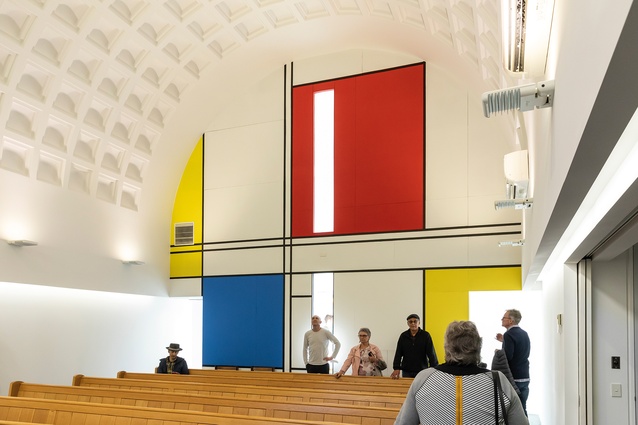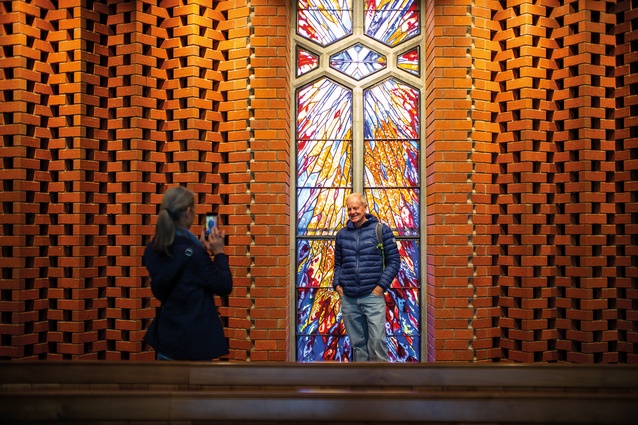Growing up, not out: A review of Open Christchurch
Fritha Powell took to her bike to visit as many architectural projects as she could when the city of Christchurch opened its doors to the public in mid-May.
I’ve always dreamed of having a key to enter any building I desire. While I remain keyless, my aspirations were lived out through the festival of exceptional architecture – Open Christchurch. In any other city, this would seem to be an event of architectural provocation but not for Ōtautahi, a city shaken by 13,000-plus earthquakes. Open Christchurch provided visual evidence of progression and response to 10 years of post-disaster construction. Numerous site visits of multi-residential and revived commercial buildings unveiled a lens: witnessing the urban densification of a city once deemed desolate.
On 15 and 16 May, Christchurch opened more than 40 of its doors to its public. The event was organised by Te Pūtahi, an independent, not-for-profit body, whose aim was to encourage people to engage with, and become alive to, their city. Involvement with your city brings enjoyment and an increased level of understanding. Te Pūtahi accomplished this over the weekend with a fun event where everyone was welcome. Ōtautahi’s kaitiaki offered insights into their selected projects, gifting knowledge through tours, talks, activities and performances. With a focus on urban densification, my visits were mostly tailored to take in the public and private buildings that exemplify a push for central living. I was privileged to visit and explore homes and public buildings that, typically, I would have cycled past, privy only to the exteriors.
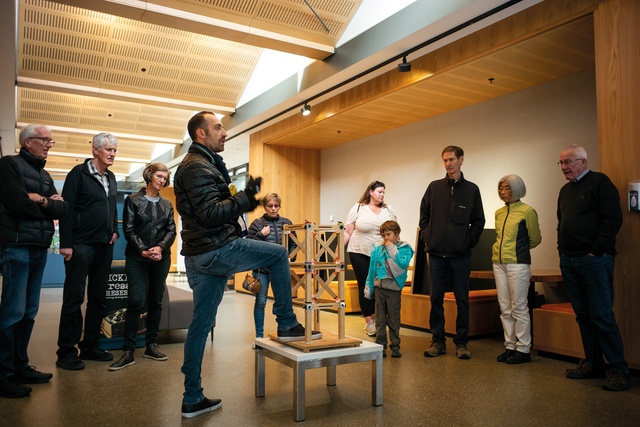
Much of Ōtautahi’s pre-earthquake building fabric was damaged beyond repair. What was left were the broken bones in the body of the city. Outlined by its four avenues, the city was reduced to rubble in pockets, losing about half of its built environment and more out on the fringes.1 Problems bring gifts; this was an opportunity for a city to rebuild. The almost-blank canvas offered an opportunity to follow progressive overseas models, such as that of Australia’s Breathe architects. Through initial public consultancy, it became clear that Christchurch’s residents were harbouring a desire for a sustainable, modern and safe city. The early knee-jerk reaction was to flee outwards. Towns like Rolleston and Rangiora were deemed far enough away from the carnage, and were readily available, and they thrived. Unfortunately, the initial flight response meant an increase in commute time, city sprawl and vacation of proximity.
I travelled mostly in the city’s core, which felt again occupied and beginning to shake its post-earthquake emptiness. I visited Ōtautahi’s iconic commercial buildings and wove a few residential sites into the timetable. Sitting in the Town Hall, listening to the Christchurch Symphony Orchestra rehearsing was one of the standout moments. There was no pressure to be a well-behaved crowd and the atmosphere was profoundly relaxed. Families and their tamariki flowed in and out of the auditorium. It exemplified public participation in an otherwise exclusive and somewhat serious setting. An expert tour of the Centre of Contemporary Art (CoCA) gallery was scarily informative – some people know so much about buildings.
The engineering mastery of the new builds and transforming the existing to functional were explained at numerous sites. All buildings in Christchurch, especially the high-functioning commercial, have this in common. The engineering-specific tour of the library, Tūranga, considered by some to be the safest building in Ōtautahi, exemplified this. I had no idea the walls, unconnected to the foundation, were better performing in an earthquake: genius.
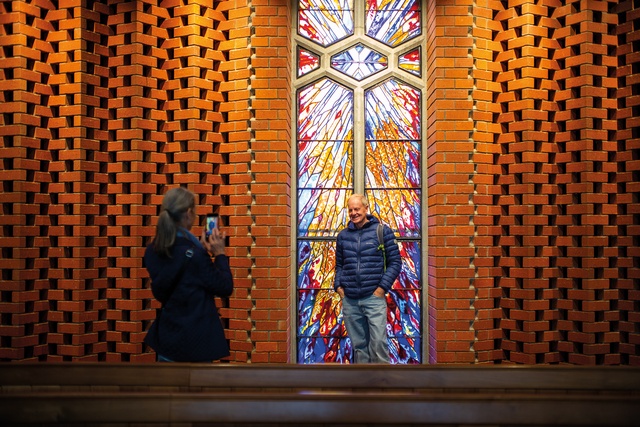
The Housing Co-Op on Peterborough Street was both eye-opening and dramatically progressive – not a revolutionary idea internationally but, for Ōtautahi, it is. The shared site with 16 units, blurring the line between public and private, has a shared laundry and optionally shared communal spaces. This is a great example of the repositioning of the term ‘housing’, and I imagine this will be a neoteric shift for some. I also headed over the hill to Cass Bay and visited the Green family home – the stimulating copper house – and finished the day at Michael O’Sullivan’s studio monastery, overlooking Lyttelton – a place where reality tends to wane.
An early start on Sunday took me to Sydenham for the Chen Anselmi Units, followed by another site visit that exemplified the trend to move in, up or close to. Tight, light, clever articulation of space and well-thought-through materiality could be said for both the Chen Anselmi Units and the Madras Street Townhouses by Mitchell Coll: a reminder that architecture is not always about the maximisation of budget and metres squared. And it doesn’t gain more merit by having architecturally designed neighbours. These projects are on isolated, gritty city sites. I also visited the Millstream Apartments by renowned Christchurch architect Peter Beaven. My weekend concluded with commercial buildings facilitating the shift into the city, such as the Isaac Theatre Royal, and a final glance across the ever-changing and densifying city landscape from the rooftop bar of The Muse Art Hotel.
Open Christchurch gave insight into a city growing up, not out. It also revealed a wide awareness of interest. A diversity of people, including those removed from any aspect of design, invested time and energy into our built environment. It was uniting to see people on the streets holding their white-and-yellow timetables, while volunteers stood at each door, welcoming all. After the evident fragility of the built environment post-earthquake, the value placed on what fills the gap and what remains is now seemingly, and rightly so, weighed and judged in the public eye.
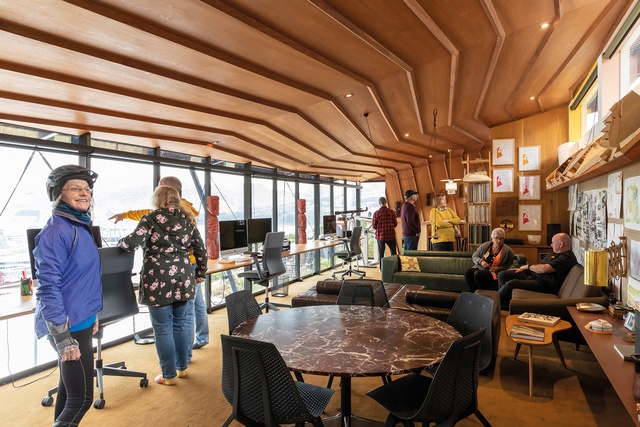
Open Christchurch flaunted the apertures of the built environment. It acted as a medium to showcase to the public the historic building fabric that remains and demonstrate the progression in the new: a celebration of how far we have come and what we have achieved. With numbers at some sites reaching 700, it was incredibly well received. The selected projects highlighted history, technological rigour, advanced engineering and diligent architectural design, showing the public a city tenacious and capable of redeveloping from the clutches of disaster. It was also a lot of fun, ka pai.
There are many to be acknowledged: the home-owners, the architects, the volunteers, those who facilitated the events, and Te Pūtahi. I extend a final acknowledgement to those without whose input the event would not have been possible; to the Ōtautahi residents, showing pride and interest in the regrowth of their tūrangawaewae. As we are acutely aware in Ōtautahi, cities are always in the process of unfolding; they are never finished.2 How exciting are the next 10 years going to be?
1Mary Hobbs, Christchurch Dreaming, HarperCollins, 2011, p. 176.
2Barnaby Bennett, James Dann, Emma Johnson and Ryan Reynolds (eds), Once in a Lifetime: City-building after Disaster in Christchurch, Freerange Press, 2014,
p. 478.

